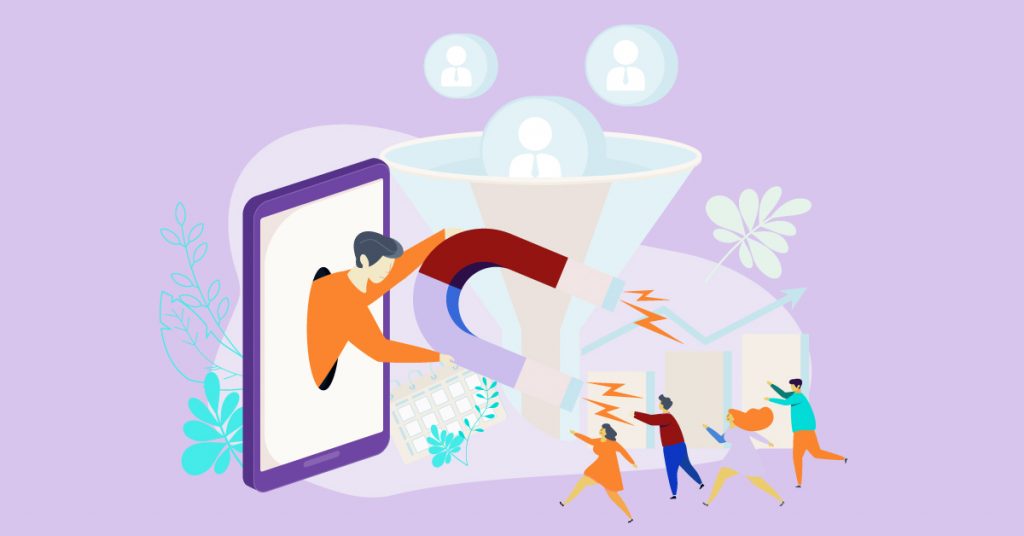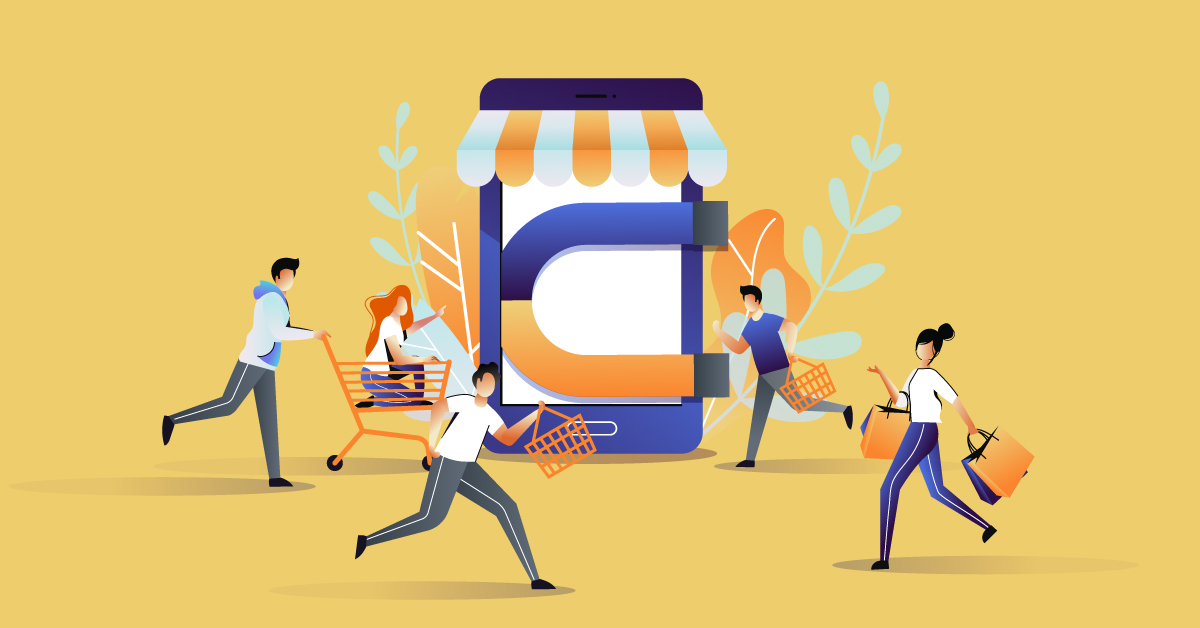As you know by know, acquisition is the first stage of lifecycle marketing. Acqusition can be broken down into two more phases: traffic generation and conversion rate optimization.
Traffic generation involves garnering attention and bringing people to your store. Conversation rate optimization is the process of getting those people to sign up for your email and SMS lists.
In this article, we are going to cover some of the basic tactics for traffic generation and conversion rate optimization.
Down the Full Lifecycle Marketing Ebook
Traffic Generation
Traffic generation is anything you do to bring people to your website. Traffic generation can be costly and time-consuming, which is one of the main reasons lifecycle marketing tries to decrease the need for traffic generation and focus on customer retention.
But, of course, you can’t focus on customer retention if you don’t have any customers to begin with. To help you on your acquisition journey, here are some basic traffic generation tactics to attract prospects to your store.
Search Engine Optimization (SEO) and Product Descriptions
Search engine optimization, or SEO, is the practice of optimizing a website in an effort to get it to rank higher on search engines (like Google).
According to BrightEdge, 53% of all website visits come from organic search traffic, meaning search drives more traffic than social, paid, and email combined.
SEO can get technical, but the general idea is actually very simple: In order to rank higher in Google, your website needs to provide value to readers who are searching for your target keywords.
For online stores, one of the best opportunities to provide value is through your product descriptions. There’s a tendency among Shopify store owners to take shortcuts like copying and pasting the product descriptions from the manufacturer.
DON’T DO THAT!
Search engines don’t like duplicate content. They’re especially intolerant of what’s called “external duplication,” which occurs when you publish text on your website that comes from outside pages (such as a manufacturer).
If a search engine discovers duplicate content on your site, it is less likely to rank your pages for relevant search terms.
Product Descriptions Tips
Here are a few tips on writing unique copy for each of your product pages that will help boost your SEO:
Choose the right length.
Your product description should be as long as necessary to provide the information people need to make a buying decision without added fluff.
Integrate keywords.
Start with keyword research. What phrases do people use when looking for that type of product online? Integrate those phrases into your product description. Always ensure the primary keyword is in the first sentence of your product description.
Provide details.
By providing as many details about the product as you can, you increase the chance that your page is deemed highly relevant by search engines. This helps you show up higher in search results.
Use feature/benefit writing.
Make sure that your marketing copy is user-friendly for humans, not just for search engines. The best way to do this is to engage in feature/benefit writing.
This involves describing a feature and coupling it with a benefit for the user to help them understand how your product will fit into their lifestyle or help them achieve something.
Other Shopify Store SEO Tips
Here are some additional SEO efforts you can engage in on top of writing unique product descriptions:
Write unique page titles and meta descriptions for all pages.
Good titles and meta descriptions should be concise while packing in tons of information.
Optimize images.
Add alt text to all images on your website. This helps with accessibility, but it also tells Google what is in your images.
Links are gold.
External backlinks (links from other websites) are as good as gold for SEO. Conduct backlink outreach to improve your link profile.
Internal links can also boost SEO. Whenever possible (without overdoing it), link to other pages on your website. This creates a solid web of connections, making it easier for Google to crawl your site.
Online Advertising
In many cases, businesses need to engage in both SEO and paid advertising to drive traffic to their sites. This is known as multichannel marketing — relying on multiple channels instead of sticking with a single option.
Online advertising refers to a wide variety of ad types. Here are some of the most popular to consider for your Shopify store:
Search Engine Marketing
This is when you pay to show up in the search results. You can bid on keywords to have your ads show up at the top of the organic search results or on other areas of the search engine result page (SERP).
Display Advertising
This is when you pay to show up on another website. You can arrange ads directly with a website or use an ad network (easier and more common). With PPC, or pay-per-click, you bid on keywords and ad placement. Ads automatically show up according to bids and programmatic technology. You only pay when someone clicks the ad.
Social Media Advertising
Social media advertising is when you pay to show up on people’s social media feeds – you can purchase Facebook ads or pay to boost your post (convert a regular post into an advertisement). Since organic reach on social media is fairly low, this is a good idea if you want to expand your social reach.
Social Media Marketing
Social media marketing is different from social media advertising. In general, social media marketing is the work you do on these channels that you don’t pay for.
This type of marketing strategy can drive people to your Shopify store if you’re able to capture user interest and develop a following. While this sounds like a great opportunity, it is becoming increasingly difficult to grow social media followings without paid advertising.
What’s the Best Traffic Generation Tool for You?
Unique product descriptions and online advertising are compulsory for Shopify stores that want to succeed.
But exactly how you drive traffic and what formula works best is something you’ll have to figure out for your own store and customers.
Everyone’s target audience is unique, and you’ll need to test various efforts to find out what works best for your brand.
Now that we’ve gone over how to drive potential customers to your online store, let’s talk about conversion rate optimization and how you can get those people to sign up for your email and SMS subscriber list!

Conversion Rate Optimization
Conversion rate is the percentage of people who come to your ecommerce site and take a desired action. During the early acquisition phase, that action doesn’t necessarily mean a purchase. A conversion typically refers to an email sign-up.
Conversion rate optimization refers to the work you do to increase your sign-up rate. Here are some options you might consider to help boost conversion rates.
Opt-in Forms
Opt-in forms serve a variety of purposes, but ultimately, they’re the invite to your Shopify party. They let potential customers know that you have valuable information for them about products or promotions.
But because you value people’s privacy and time, you only want to send them the information they actually want—which is why you need them to opt-in.
Pro tip: Unsolicited emails and retargeted marketing when someone has specifically said “no thank you” to such activity are examples of unethical marketing, and they can drive consumers away. It’s also illegal in some situations, so opt-in forms do more than enhance conversion rates – they help you stay on the right side of laws and regulations.
There are typically two types of opt-in forms: static and active forms. A static opt-in form is stationary on your website. Static forms are usually placed in high-visibility places like on the homepage or on the sidebar of a blog post.
Active opt-in forms are things like popups. You can trigger a popup to appear after someone is on a page for a certain amount of time. You can also trigger a popup if someone is about to leave — this is called an “exit intent” popup. While popups are typically more effective, they are also more intrusive and might send the wrong message to your audience.
Lead Magnets
Online lead magnets are incentives designed to get people to sign up for an email or SMS list. Some lead magnets you can try in your Shopify store are:
- Sweepstakes or giveaways. For example, everyone who signs up for your newsletter or makes a purchase during a specific month might be entered for a prize drawing.
- Deals and coupons. Free shipping, BOGO offers, or even 10-15% off coupon codes can get people to click through and consider your products.
- Freebies and downloads. Offer a downloadable guide for anyone who signs up for your newsletter. An example would be a Shopify store that sells travel luggage offering a cruise ship packing checklist in exchange for an email address.
In the next section, we’ll cover some specific tips for nurturing window shoppers into purchasers.
